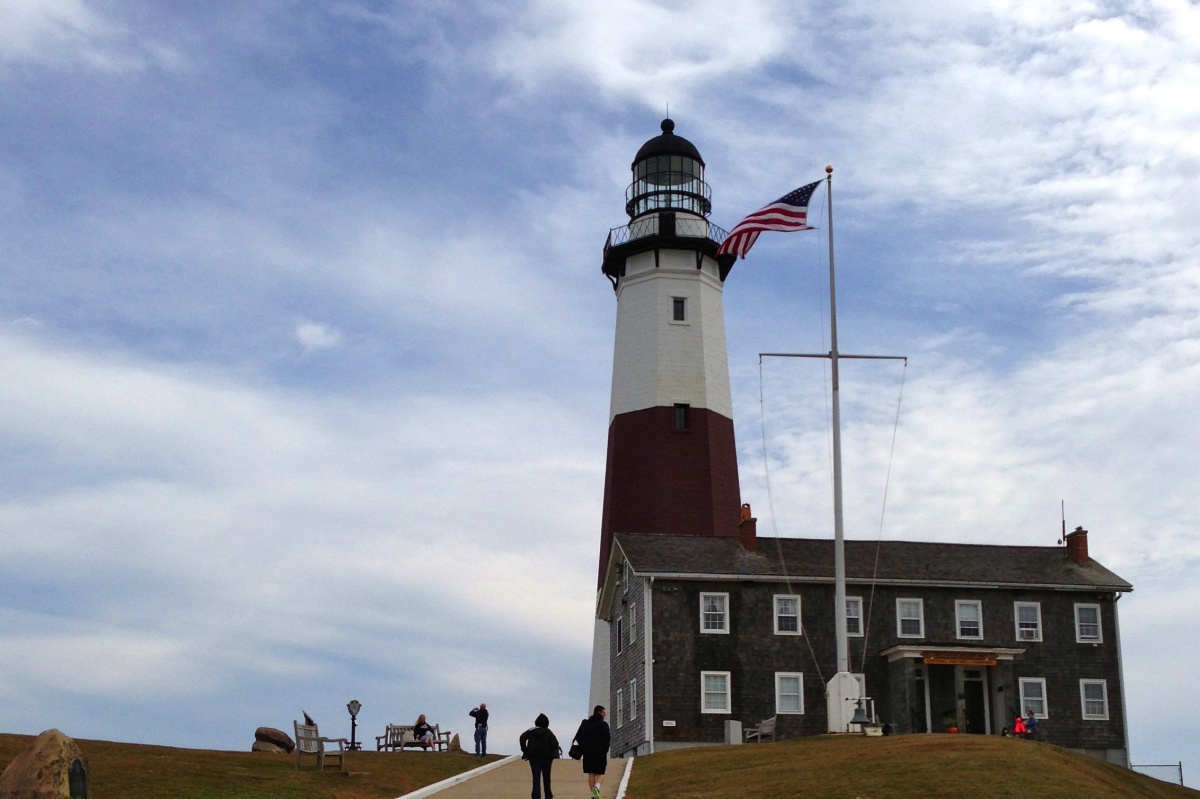Getting to Know the Monuments of Montauk

Take a stroll through Montauk and you will find a unique place that offers a one-of-a-kind vacation experience, including the opportunity to visit a few historic monuments.
The Montauk Point Lighthouse is one of the most iconic landmarks on the South Fork, and in the whole state. The building became New York State’s first lighthouse after construction—which was authorized by President George Washington—was completed in 1796, and is the fourth oldest active lighthouse in the United States.
The lighthouse was designated a National Historic Landmark in 2012. During the summer, the lighthouse is open to visitors from 10:30 a.m. through 5:30 p.m. Sunday to Friday, and 10:30 a.m. through 7 p.m. on Saturday. Admission to the museum is $9 for adults, $8 for seniors, and $4 for children under the age of 12. There is also an $8 parking fee.
The landmark sits atop the bluff known as Turtle Hill and, on a sunny day, spectators looking at the horizon may be unable to tell where the sky ends and the ocean begins.
You might be a little confused if you spy the tiki statue situated against the Montauk Beach House hotel. Though Montauk is not a part of a Hawaiian island, this figure is based on the tikis of traditional Hawaiian culture, which represent the first man and his creation from a mixture of red earth and saliva. The statue, also known as the Ronjo tiki, has called Montauk home longer than the Montauk Beach House has been in existence: prior to the opening of the current hotel the building was home to the Ronjo motel, which was named after the owner’s two children, Ron and Joanne.
Chris Jones and Larry Siedlick, the current owners of the Montauk Beach House, acquired the 1-acre property in March 2012 and with the new owners’ renovations came a paint job for Ronjo: the brightly colored, red and white statue was transformed with a coat of copper paint. Since then, it has become the center of attention for visitors looking for the perfect Montauk-themed photo.

Just beyond the Ronjo tiki statue is the tallest building in Montauk: a residential condominium complex known as the Tower. The Tower can be seen from anywhere in the village and is conveniently located near both Main Street and the beach. Once known as the Carl Fisher Office Building, or the Montauk Improvement Building, the Tower was headquarters for architect Carl Graham Fisher’s Montauk development project in the 1920s.

In 1925, Carl Fisher purchased the entire Montauk peninsula—more than 10,000 acres—with the intent of developing the land as a Miami Beach-type resort town. In the six years between 1926 and 1932, Fisher built many of Montauk’s roads, commercial buildings and houses in a whirlwind of construction and development.
Before the Great Depression put a halt to Fisher’s grand plans to transform the peninsula into a vacation resort destination for the wealthy, Fisher’s slogan was “Miami in the winter, Montauk in the summer.” Considering the amount of rich and famous people that now call “The End” home every summer, it seems Fisher’s plans have at last come to fruition.
One last monument to visit while touring Montauk: the gazebo located in heart of the village at the town green. The town green is the center of many community events, like the weekly Farmers Market held every Thursday morning from 9 a.m. to 2 p.m. through October 9, the free summer concerts held every Monday evening at 6:30 p.m., and the annual Fall Festival in October. Anyone spending time Montauk will find a variety of events to enjoy there.
For more Montauk events and history visit montaukchamber.com



